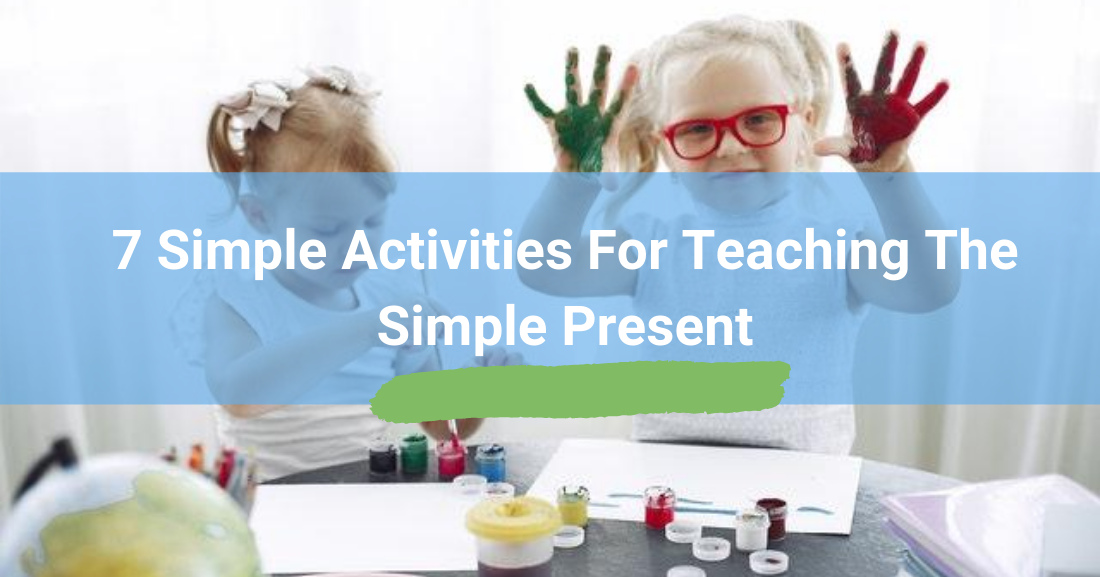7 Simple Activities for Teaching the Simple Present

![S: Savvy Senses - Itís All About Observation [Teacher Tips from A to Z]](https://m.busyteacher.org/uploads/posts/2011-08/1312723112_esl-observation-lesson.png)
Have fun as you spend some time with your kids paying attention to what is around you.
The Fabulous Five
Most people know that humans have five senses, but for ESL students trying to express what they take in from these senses can be a challenge. Start by writing the five senses across the top of your white board (hearing, touch, smell, sight, taste) and ask your students to explain what each one is. Now that they know the vocabulary for the senses themselves, list under each one words that relate to that sense. Ask your students to volunteer words that they already know. For example, under smell you might write sniff, nose, odor, scent or other related words. Under sight, your students might volunteer the words vision, look, appearance, watch or stare. Write down whatever words your students offer, and then add some more of your own. It is always beneficial when you can introduce new vocabulary in some tangible context, and learning groups of words is one way to do that, so take advantage of this vocabulary activity to teach your students some new sensory words. Think along the lines of different textures or obscure colors when coming up with the words.
You might also want to read your class some books about the five senses. You can use My Five Senses or The Five Senses or any number of others. After reading these books, allow your students to add more words to their vocabulary lists. You can keep these lists posted in your classroom or ask your students to copy them into a notebook and add to them throughout the year. Either way, they will have an increased vocabulary bank to draw from and know where to look when writing sensory details.
Spin the Details
Now that your students are familiar with what the five senses are and they have some specialized vocabulary to talk about them, it is time to start using them for observation. Tell your students that they are going to do an observation exercise. As part of the exercise, they will create a sensory web. They should begin by selecting an object to observe. It can be something in the classroom or something at home. An apple is a good object to use, but your students can also use items such as their hand, their desk or a book. Whatever object they choose, they should write that object in the center of their page.
Next, your students should draw five spokes coming out from what they have written in the center of the page. At the end of each spoke, they will draw a circle in which they will write their sensory observations. They should label the circles “looks like, feels like, tastes like, sounds like and smells like.” Then give them plenty of time to make their observations and write notes in the circles. You may want to set a minimum of tem observations for each spoke. However, warn your students that they should not taste anything without permission since putting foreign objects in their mouths could be harmful. After completing the web, you may want students to share with partners the observations that they made. This will give them speaking practice as well as help them formulate complete thoughts before they write their complete descriptions.
Illumination
Now is the time for your students to write their descriptions. Encourage them to use as much detail as possible but not to name the object that they are describing. They can use the word “object” whenever they need to refer to what they are describing in their writing. Also, challenge them to use some of the vocabulary that you listed on the board earlier. They should try to use variety in their word choice as well as give thorough descriptions.
When your class is done writing, collect their pieces and take turns reading the descriptions in front of the class. Challenge your students to guess what the object is that is described in the paper. Award a simple prize to anyone who guesses correctly and the one who wrote those details.
Wrap up your observation lesson by playing a game with your students. Have them eliminate one of their senses and try to guess objects using the other senses. You can place objects in paper bags for them to feel, play sound clips for them to listen to, or provide simple liquids dabbed on cotton balls for them to smell (vanilla extract, hand soap, vinegar or milk just to name a few). See who can get the most answers right among your class. This will provide a whimsical conclusion to your observation challenge.
Taking some time to focus on observation is a first step to getting your students to write strong, descriptive language. Have fun while you do so, and your students will be more likely to write descriptively in the future.